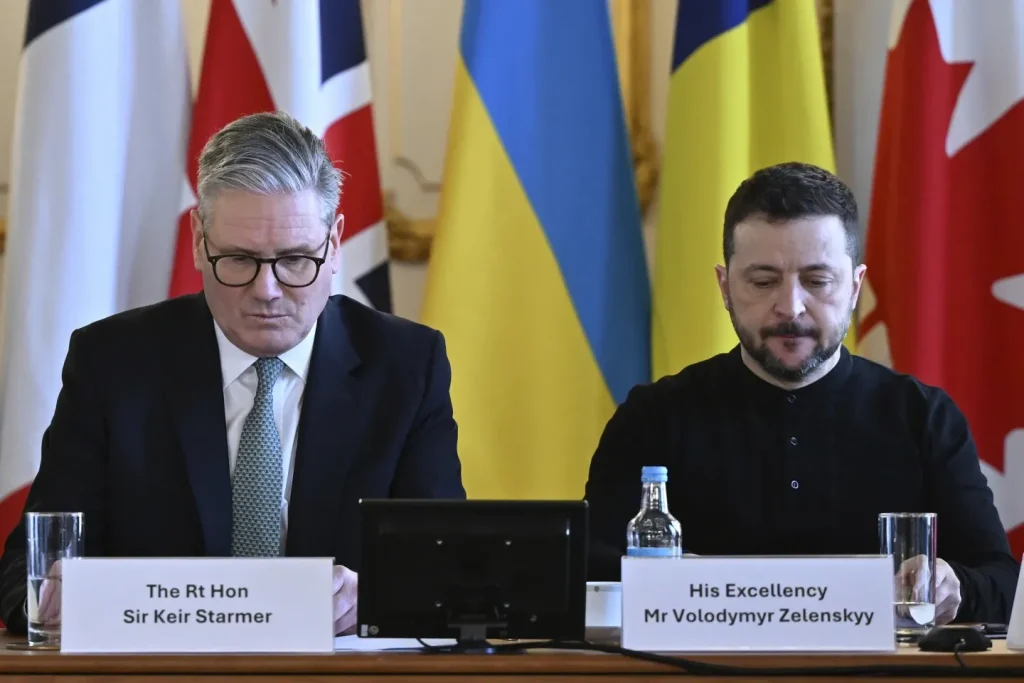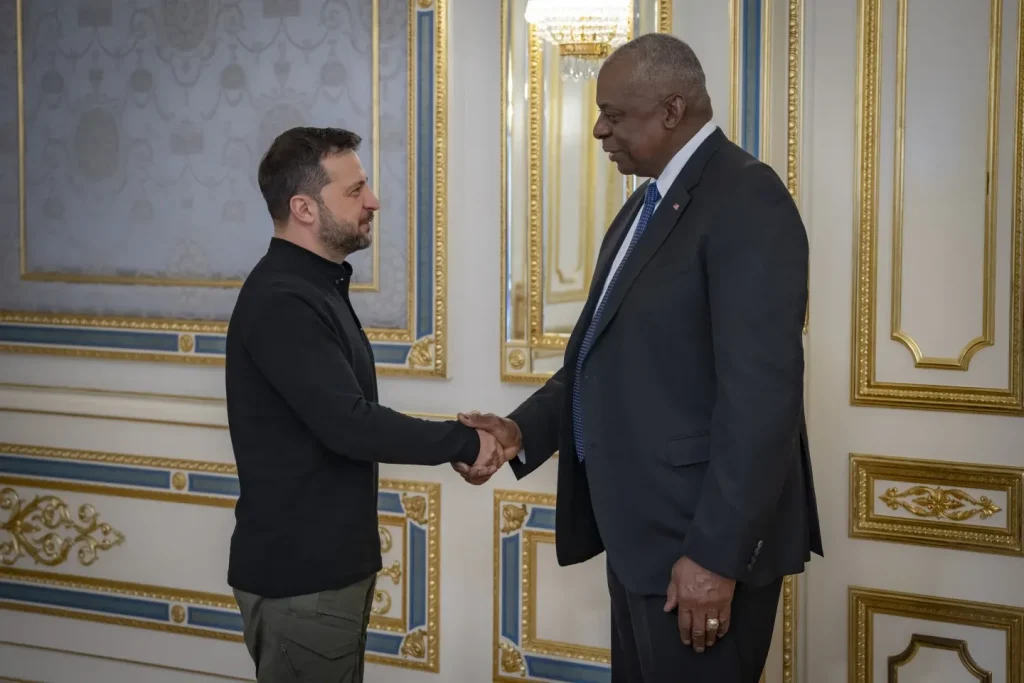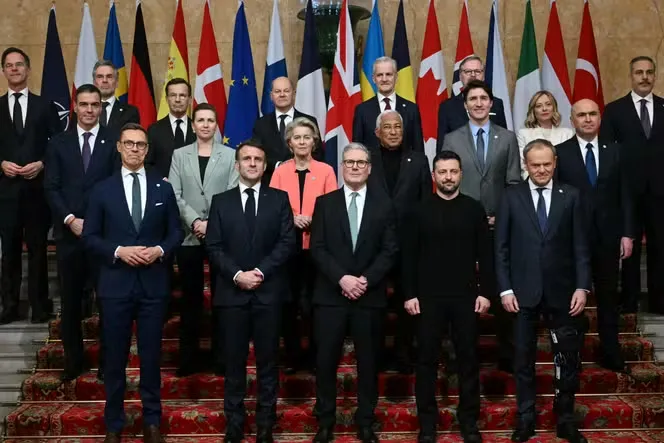UK summit Ukraine security 2025: The UK hosted a major summit in London on March 2, 2025, to tackle Ukraine’s future amid its conflict with Russia. Leaders, including Prime Minister Keir Starmer and Ukrainian President Volodymyr Zelenskyy, met to discuss more than just weapons. They focused on long-term security guarantees—think funding, diplomacy, and peacekeeping. This article breaks down what the UK summit on Ukraine security in 2025 really means for the war-torn nation and Europe’s role in it.
As a result of these days, we see clear support from Europe. Even more unity, even more willingness to cooperate.
Everyone is united on the main issue – for peace to be real, we need real security guarantees. And this is the position of all of Europe – the entire continent. The… pic.twitter.com/inGxdO8jQz
— Volodymyr Zelenskyy / Володимир Зеленський (@ZelenskyyUa) March 3, 2025Why This Summit Matters for Ukraine and Europe
The UK summit on Ukraine security in 2025 sent a clear message: Europe aims to step up. With the U.S. under President Donald Trump showing less interest in leading, Starmer pushed for a European-led plan. He pledged troops and planes but stressed broader support too. Leaders talked about using frozen Russian assets and building economic ties to keep Ukraine strong. This shift matters because it shows Europe taking charge of its backyard—something that could change how the war plays out.
Key Outcomes from the UK Summit
| Outcome | Details |
| Military Aid | UK pledged $2 billion, including missiles and air defense systems. |
| Troop Deployment | Starmer confirmed readiness for UK troops as peacekeepers if the U.S. backs the plan. |
| Frozen Russian Assets | Plans to use $300 billion in seized funds for a $50 billion loan to Ukraine. |
| Economic Support | EU leaders discussed trade deals and reconstruction aid worth $486 billion over 10 years. |
| Peacekeeping Force | UK and France lead a coalition for a multinational force—details still forming. |
| Ceasefire Plan | A new approach rejecting old Minsk agreements, aiming for a stronger deal. |
| U.S. Cooperation | Leaders want U.S. support but won’t wait for it—Europe moves first. |
| NATO Membership Talks | Ukraine pushes for NATO, though some members resist—bilateral pacts offered instead. |
| EU Defense Spending | Calls to relax EU fiscal rules to fund more defense projects for Ukraine. |
| Summit Date | Held March 2, 2025, in London—full report at gov.uk. |
What’s Next After the London Talks?
The UK summit on Ukraine security in 2025 didn’t stop at promises. Leaders set a timeline. They plan to pitch their ceasefire idea to the U.S. soon. An EU meeting in Brussels on March 6 will dig into defense budgets and peacekeeping roles. Starmer wants quick action—think weeks, not months. Ukraine’s leaders liked the focus on real guarantees, not just talk. But they know Russia won’t back down without pressure.

How Frozen Russian Assets Could Change the Game
One big idea from the summit stands out: tapping into $300 billion of frozen Russian cash. Starmer called it justice and a practical fix. The plan? Turn those assets into a $50 billion loan for Ukraine. That money could rebuild schools, roads, and power grids hit by war. It’s not a done deal—legal hurdles exist—but it’s a bold move that could ease Ukraine’s money woes without taxing Europeans more.
Non-Military Support in Focus
| Support Type | What It Means for Ukraine |
| Economic Aid | $486 billion over 10 years for rebuilding—see europa.eu. |
| Trade Deals | Easier access to EU markets to boost Ukraine’s economy. |
| Reconstruction Funds | Money for homes, hospitals, and jobs hit by Russian attacks. |
| Diplomatic Backing | Europe rejects weak peace deals, pushes for Ukraine’s strength at the table. |
| Bilateral Pacts | Security deals with individual countries if NATO stalls. |
| Loan from Frozen Assets | $50 billion to ease budget strain—details at treasury.gov.uk. |
| EU Membership Path | Talks to bring Ukraine closer to the EU for stability. |
| Peacekeeping Prep | Plans for troops to enforce a ceasefire, led by UK and France. |
| Defense Investment | EU nations urged to spend more on weapons and support. |
| Summit Follow-Up | Brussels meeting on March 6 to lock in plans—check europa.eu. |
Can Europe Lead Without the U.S.?
Starmer admitted it: the U.S. matters. He wants Trump to back the troop plan, but Europe won’t sit idle. France and others are on board for a peacekeeping force. Germany, Denmark, and Italy showed support too. The catch? No one named every country in the coalition yet. If the U.S. opts out, Europe’s cash and willpower get tested. Readers, do you think Europe can pull this off alone?

A New Kind of Peace Plan
Ukraine’s team at the summit pushed one point hard: peace needs teeth. Old deals like Minsk flopped because Russia ignored them. The UK plan demands three things: arm Ukraine, lock in European guarantees, and get U.S. muscle to scare Russia straight. It’s a tall order. Zelenskyy liked it—said it beats empty promises. But making it stick means fast moves and tough talks ahead.
Conclusion
The UK summit on Ukraine security in 2025 delivered big ideas. Troops and planes grabbed attention, but the real story is broader. Frozen Russian assets could fund recovery. Economic aid and trade might keep Ukraine standing. A European-led peace plan aims to end the war with strength, not weakness. Next steps hinge on the U.S. and EU talks soon. For Ukraine, it’s a lifeline—maybe the best shot at peace in years.
- दिल्ली जल बोर्ड में नौकरी Level 6 ₹54,162 महीना की सैलरी, जाने पूरी प्रक्रिया और आवेदन कैसे करे?
- RRB NTPC 2025 Latest Updates: Notification, 11558 Posts, Exam Date, Pattern
- PM Awas Yojana Online Apply 2025: प्रधानमंत्री आवास योजना 2.0 का फॉर्म ऑनलाइन कैसे भरे
- Google STEP Internship 2025: How to Apply, Eligibility, Salary & More
- Bihar Board 12th Pass Scholarship 2025: इंटर में पास की लड़कियों को मिलेगा ₹25,000, ऐसे करें ऑनलाइन आवेदन
FAQ Related To UK summit Ukraine security 2025
It was a meeting in London on March 2, 2025, where leaders pledged military and non-military support to secure Ukraine against Russia.
The UK wants to use $300 billion in seized funds for a $50 billion loan to rebuild Ukraine’s economy and defenses.
No, they’re planned as peacekeepers, not combatants, but only if the U.S. supports the ceasefire plan.



